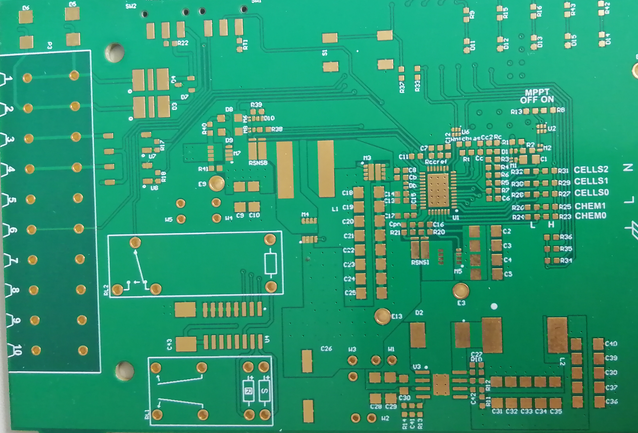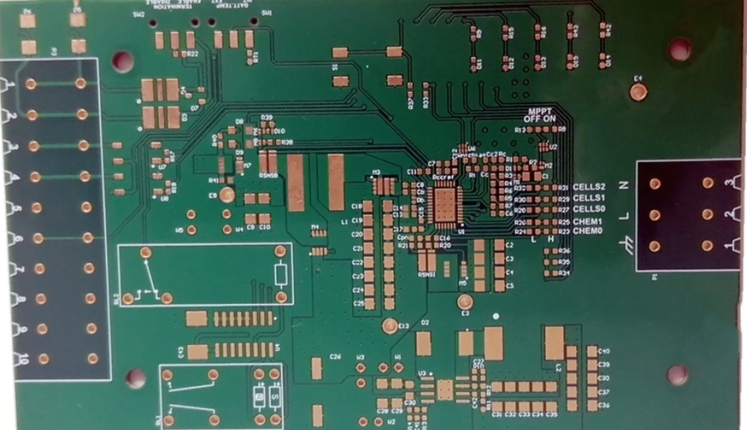How to consider safe spacing in PCB design?
There are many areas in PCB design where safe spacing needs to be considered. Here, it is temporarily classified into two categories: one is electrical related safety spacing, the other is non-electrical related safety spacing.
Electrical related safety spacing
1.Spacing between wires
As far as the processing capacity of mainstream PCB manufacturers is concerned, the minimum spacing between wires shall not be less than 4mil. The minimum wire distance is also the distance from wire to wire and wire to pad. From the perspective of production, the bigger the better if possible, and 10mil is a common one.
2.Pad aperture and pad width
In terms of the processing capacity of mainstream PCB manufacturers, the aperture of the pad should not be less than 0.2mm if it is mechanically drilled, and 4mil if it is laser drilled. The aperture tolerance is slightly different according to the plate, generally can be controlled within 0.05mm, the minimum width of the pad should not be less than 0.2mm.
3.Spacing between pad
As far as the processing capacity of mainstream PCB manufacturers is concerned, the spacing between pads shall not be less than 0.2mm.
4.The distance between copper and plate edge
The spacing between the charged copper leather and the edge of the PCB board should be no less than 0.3mm. On the Design-Rules-Board outline page, set the spacing rule for this item.
If a large area of copper is laid, there is usually a shrinkage distance between the plate and the edge, which is generally set to 20mil. In the PCB design and manufacturing industry, under normal circumstances, due to the mechanical considerations of the finished circuit board, or to avoid the copper skin exposed on the edge of the board may cause edge rolling or electrical short circuit, engineers will often spread a large area of copper block relative to the edge of the board shrinkage 20mil, rather than the copper skin has been spread to the edge of the board.
This copper indention can be handled in a variety of ways, such as drawing a keepout layer along the edge of the plate, and then setting the distance between the copper and the keepout. A simple method is introduced here, that is, different safety distances are set for the copper laying objects. For example, the safety distance of the whole board is set to 10mil, and the copper laying is set to 20mil, which can achieve the effect of shrinking 20mil inside the edge of the board and eliminate the possible dead copper in the device.
Non-electrical related safety spacing
1. Character width, height and spacing
No changes can be made in the processing of the text film, but the width of the lines of the characters below 0.22mm (8.66mil) in the D-CODE should be bolded to 0.22mm, that is, the width of the lines of the characters L = 0.22mm (8.66mil).
The width of the whole character is W = 1.0mm, the height of the whole character is H = 1.2mm, and the spacing between characters is D = 0.2mm. When the text is less than the above standard, processing printing will be blurred.
2.Spacing between Vias
The through-hole (VIA) to through-hole spacing (edge to edge) should preferably be greater than 8mil
3.Distance from screen printing to pad
Screen printing is not allowed to cover the pad. Because if the screen printing is covered with the solder pad, the screen printing will not be on the tin when the tin is on, which will affect the component mounting. The general board factory requires that 8mil spacing be reserved as well. If the PCB board is limited in area, 4mil spacing is barely acceptable. If the screen printing is accidentally overlaid on the pad during design, the plate factory will automatically eliminate the screen printing on the pad during manufacturing to ensure the tin on the pad.
Of course, it’s a case-by-case approach at design time. Sometimes the screen print is deliberately kept close to the pad, because when the two pads are close to each other, the screen print in the middle can effectively prevent solder connection short circuit during welding, which is another case.
4.Mechanical 3D height and horizontal spacing
When installing the components on the PCB, it is necessary to consider whether the horizontal direction and space height will conflict with other mechanical structures. Therefore, in the design, we should fully consider the compatibility between components, between PCB finished products and product shell, and spatial structure, and reserve safe spacing for each target object to ensure that there is no conflict in space.

